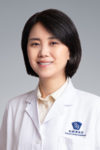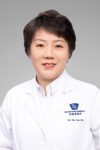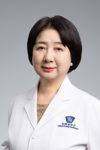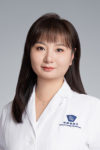
 Eye Clinic
Eye Clinic
At Beijing United Family Hospital’s Eye Clinic, you can see a number qualified expert ophthalmologists, including glaucoma and cataract specialists, retina disease specialists, and pediatric ophthalmology specialists. We provide direct, comprehensive, specialized, and easily accessible medical and surgical procedures for our local and international patients. Our clinics have been providing eye surgery for over 10 years, including cataract surgery, glaucoma surgery, retinal surgery (laser surgery and surgery for complex vitreoretinal diseases), children’s lacrimal system procedures, orbital surgery (orbital tumor surgery and trauma repair surgery), and eye-related plastic surgery. Our surgeons are all highly experienced specialists. For many years, our Eye Clinic has been cooperating with Beijing TongRen Hospital to ensure the highest possible level of care.
The Beijing United Family Hospital Eye Clinic provides great service in a comfortable environment, as well as a convenient location and opening hours. Our ophthalmologists and optometrists provide the highest level of personalized services, from eye exams and follow-up care to frame, contact lens, and OK lens consultations.
To make an appointment, please call our 24hr Service Center: 4008-919191.
To better meet the needs of our patients, we now offer a Cataract and Glaucoma Specialty Service!
Specialist: Dr. Wang Lan
Clinic hours: Monday to Friday, 8: 30 am – 5:00 pm
Location: Beijing United Family Hospital in the Lido area
Our Clinicians
Eye Clinic Services
Our clinic offers full ophthalmic services including routine eye exams, diagnosis and medical treatment of eye disorders and diseases, prescriptions for eyeglasses, orthokeratology, surgery such as cataract,glaucoma and strabismus etc., and management of eye problems that are caused by systemic illnesses.
Some eye diseases — such as glaucoma and diabetic retinopathy — have no symptoms in their early stages, so you may not know you have a problem until the disease is in its later stages. This can make treatment more difficult, and the problem could become harder to manage. Therefore, regular eye examinations are essential for early diagnosis and treatment. Early detection and treatment can slow down or even reverse the progression of eye disease.
Common components of eye examinations:
- Testing vision
- Eye pressure
- Checking alignment and movement of the eyes
- Visual field testing
- Examining the front of the eye using a microscope (a slit lamp)
- Assessing the reflexes of your pupils
- Examining the retina (the back of the eye)
How Often Should I Get an Eye Exam?
Babies (ages 2 and younger)
Ensure that your child has his or her eyes screened during regular pediatric appointments. Some childhood eye conditions to look out for include squinting (crossed eyes), lazy eye (amblyopia), and childhood myopia (near-sightedness).
Children and teenagers (ages 3 to 16)
A child’s vision can be accurately tested at the age of 3. Ensure that your child has an eye examination every year.
Young adults (ages 17 to 39)
Ask for a comprehensive eye examination if you have a family history of eye disease or if you have sustained an eye injury. If you are very near-sighted, make sure you get an eye exam including dilation once a year.
Adults and seniors
As you get older, you are more likely to develop age-related eye conditions. Look out for common eye symptoms like changes in vision or eye pain, flashes or floaters, distorted lines, and dry eyes that itch and burn. To monitor vision changes, adults should get a baseline eye screening when they are 40. Your doctor will assess how often you should return for follow-up screenings.
Anyone with risk factors
If you have a risk factor for eye diseases (i.e. you have diabetes, high blood pressure, a family history of eye disease like glaucoma and age-related macular degeneration, or are taking prescription medications that might affect the eyes such as steroids), you should see your ophthalmologist more frequently. Ask your eye doctor to tell you the ideal interval between check-ups.
(中文) 几种不能”等”的眼疾
(中文)
- 视网膜脱离
- 急性闭角型青光眼
- 视网膜中央动脉阻塞
- 角膜炎
- 缺血性视网膜病变
Copyright United Family Healthcare 2014 All right reserved - 京卫网审[2014]第1927号 - 京ICP备13017554号-4














